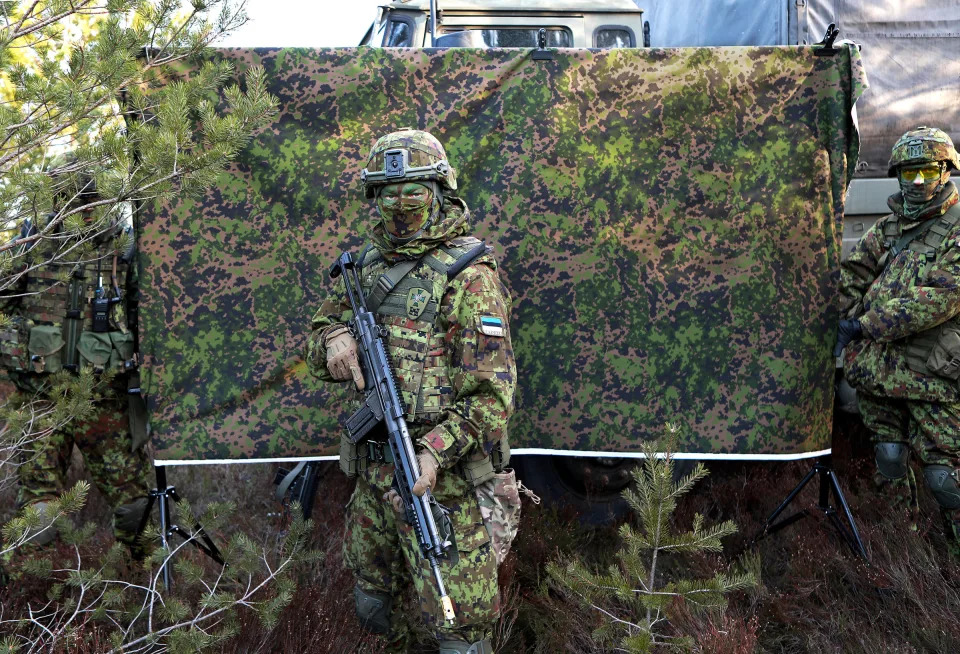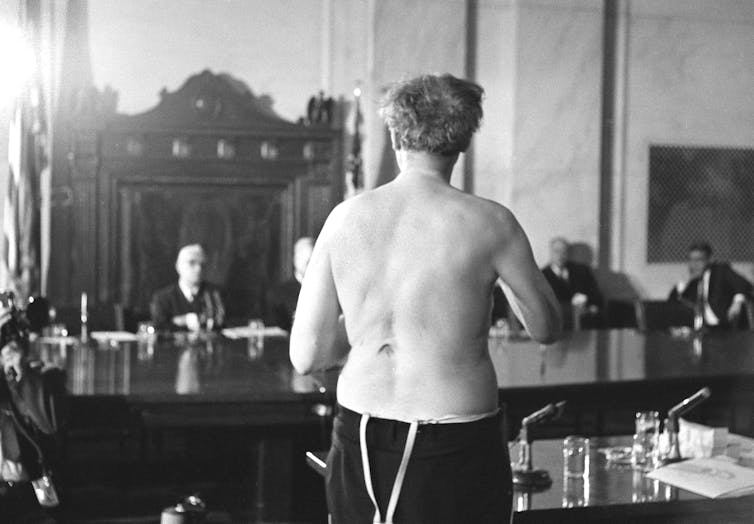The New York Times
More Russians Consider Costs of War in Ukraine as Casualties Mount
Anton Troianovski, Ivan Nechepurenko and Valeriya Safronova
April 7, 2022

Ivan Kononov, a senior lieutenant in the Russian marines, loved to cook. He made Italian food for his unit in the field, his brother said, and traded rations for spices when he was serving in Syria.
Alexander Kononov, 32, last saw his brother at the military hospital morgue in the southern Russian city of Rostov-on-Don in March. He had died in a firefight for a steel plant in the Ukrainian port city of Mariupol. He was 34. Walking to the morgue, Alexander Kononov recalled, he passed the open gate of a warehouse and glimpsed dozens of black body bags lined up on the floor.
It was only with his brother’s death, Kononov said in a phone interview, that he started paying attention to the war raging just over 50 miles from his home. And he realized, he said, that his brother had died in a war that “no one needs.”
“If everyone learns everything, there will be protests,” Kononov, who works in a freight business, said, referring to the awareness of the Russian public at large. “And I think that would be for the best. Because this war has to stop. There ought to be no wars at all.”
Six weeks after President Vladimir Putin’s invasion of Ukraine, many Russians remain in the dark about the depth of their country’s losses — and about the carnage and atrocities that their military is inflicting as it retreats in the North. But increasingly, the reality of war is intruding in the lives of regular families when death notices and body bags arrive, causing some, like Kononov, to question the war.
For others, though, the grim news of casualties is only hardening a determination to defeat Ukraine and support Putin’s conflict with the West.
“If America didn’t supply weapons to the Ukrainian Nazis, then there would be no deaths of our young guys,” Alexander Chernykh, who lost his 22-year-old son, Luka Chernykh, a corporal in military intelligence, said in a phone interview. “My personal opinion is we should just whack America with a nuclear bomb and that’s it, so that they stop getting involved in other countries’ business.”
Whether the growing personal pain of war weakens the public’s resolve for rallying around the Kremlin could help determine the future of the conflict. Insisting that the invasion is only a “special military operation” and that no conscripts will be sent to fight, the government is still trying to avoid the impression that Europe’s biggest land war since 1945 will demand widespread personal sacrifice from regular Russians.
A recent survey by independent pollster Levada found that 35% of Russians were paying little or no attention to events in Ukraine; and on state television, the deaths of Russian soldiers are rarely mentioned.
Russia last announced casualties from the war March 25, setting the count at 1,351 deaths. U.S. officials said last month that a conservative estimate put the Russian death toll at more than 7,000 people. The Russian service of the BBC on Wednesday said it had counted 1,083 military deaths that had been announced by local officials or in the local media across Russia. But 20% of those deaths concerned officers — a disproportionate toll indicating that vast numbers of deaths of lower-ranking soldiers may be going unreported.
The official silence about casualties recalls the Soviet war in Afghanistan. About that conflict, Belarusian author Svetlana Alexievich later wrote, “There were only rumors of notifications of death arriving at rural huts and of regulation zinc coffins delivered to prefabricated flats.”
This time, snippets of news about deaths reach the Russian public in announcements by local authorities and universities and notices on wives’ and mothers’ social media pages. And when it does arrive, the grim news is most often cloaked in the official language of the war.
The governor of the Ryazan region in western Russia recently said that four men from the area had died “in the struggle against the criminal nationalist regime.” In Ulyanovsk, a city by the Volga River, the wife of Senior Lt. Vladislav Lukonin of the 106th Guards Airborne Division posted that her husband had died protecting the “peaceful sky above Russia.”
When the Industrial Pedagogical College in the western city of Klintsy disclosed the death of a recent graduate, Alexei Prigoda, who was 23, on its social media page this week, it said he “died participating in the ‘Special Operation on the Territory of Ukraine,’ fulfilling his duty to the Fatherland.”
The next day, the college announced a music festival this weekend called “For Peace! For Russia! For the President!” featuring 10 local rock groups.
In the 1980s, the grinding war in Afghanistan eventually magnified the public’s disenchantment with Soviet rule. A Committee of Soldiers’ Mothers, formed at the end of the war to protect young men from abuse by the military, helped to shape a new civil society that pierced the state’s silence.
But the Afghanistan War lasted a decade. Anastasia Nikolskaya, a Moscow sociologist, said she saw no evidence of battlefield deaths turning Russians against the war in Ukraine.
Unlike during the war in Afghanistan, she said, the Russian public is being given a clear explanation for why their country is fighting: for their security in the face of Western aggression, and against Nazism. (To justify the war, Putin falsely describes Ukraine’s government as run by Nazis.) For the most part, she said, Russians are trying to avoid engaging with news of civilian deaths.
“We are trying to distance ourselves from such information,” she said. “It’s too hard to hear and know about this news. We can’t do anything about it.”
Committees of soldiers’ mothers are still operating but trying to stay out of the public eye given the state’s repression of opposition to the war. They have been fielding inquiries from people looking for sons and brothers, as evidenced on their pages on the Russian social network VKontakte.
“I haven’t heard from my brother in a week,” one man wrote. “Who do I contact? My neighbor was told yesterday she would get her son’s body in the next few days.”
In the southern Russian republic of North Ossetia, Oleg Marzoyev, a reserve officer, has been tracking the deaths of soldiers from the region on his accounts on Telegram and Instagram, writing that he was doing so because the government was not.
“You, who make these decisions, what are you trying to achieve?” he wrote last month. “People have a question: Why is there no proper attitude toward the memory of the dead?”
With war deaths growing, word of the dangers of fighting in Ukraine is filtering down through the public, and there have even been cases of service members trying to avoid combat.
Mikhail Benyash, a lawyer in the southern city of Krasnodar, said he has received more than 100 requests from Russian military and national guard service members about their legal rights should they refuse to fight.
He said he was defending three national guard members who protested the decision to fire them for rejecting the order to go to Ukraine. Nine others were pressured to drop complaints, he said.
“They don’t see a point in killing anyone,” he said of the Russians who refuse to fight. “Plus, they don’t see a point in being killed.”
But for soldiers’ families, the state’s propaganda remains influential. Chernykh, whose son grew up in a small town in Siberia and died thousands of miles west, near the Ukrainian town of Konotop, said he did not watch television news. Yet, he said Russia was fighting Nazis who were being supplied by the United States, and he dismissed the idea that his country’s army could be responsible for the atrocities being uncovered in Ukraine.
“I know the Russian spirit, and I know that Russians do not shoot at civilians,” Chernykh, an engineer, said in a phone interview from the Siberian city of Krasnoyarsk. “Only Nazis could do that.”
In another Siberian city, Khanty-Mansiysk, a 38-year-old woman named Alina — she asked that her last name be withheld out of fear of repercussions — also said she believed that her brother, a lieutenant colonel, had perished fighting Nazism.
Through tears, she said that a small group of Nazis in Ukraine was causing misery by encouraging the mistreatment of ethnic Russians. It was all an echo of World War II, she said, when some Ukrainians collaborated with the Nazis — a storyline propagated at length on Russian television.
“This is a repeat of what happened before,” she said. “This is a repeat of this history.”
For many others, there is the feeling of being at the mercy of events beyond their control. In North Ossetia, Marina Kulumbegova, 25, has been avoiding watching the news. Her father, Robert Kulumbegov, 47, left for eastern Ukraine on the first day of the war to deliver supplies to Russian troops, then stayed to fight, she said, “because there were boys there who were my brother’s age” — 23.
“The only people who know what’s really happening there are the guys who are fighting there,” she said in a phone interview from the city of Vladikavkaz. “To talk about it, to say your opinion on it, has absolutely no use.”











